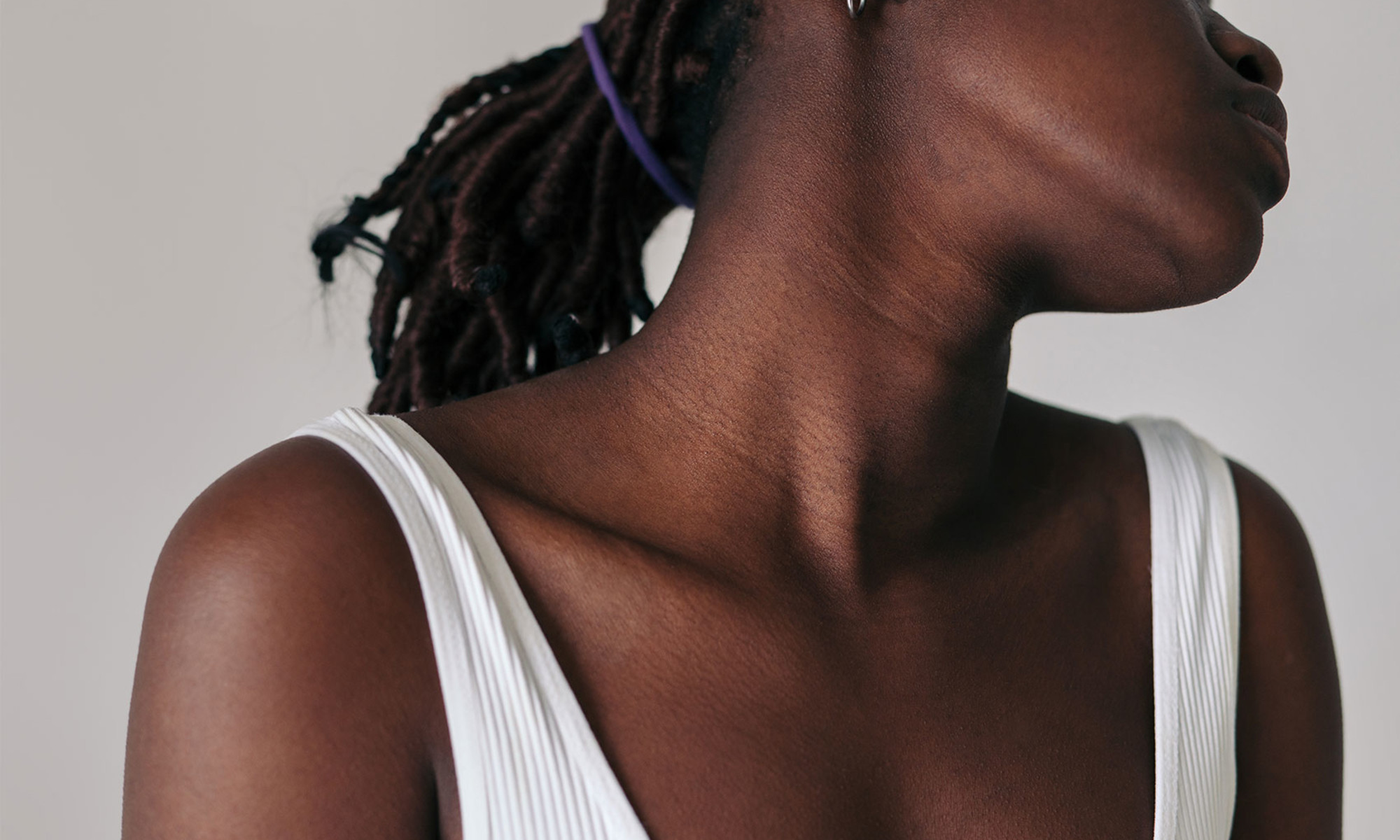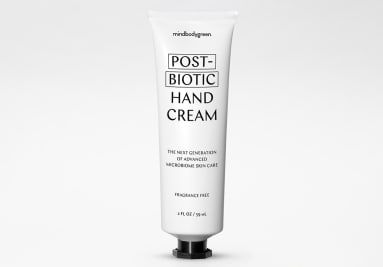I Have An Old-Looking Neck Thanks To Bad Posture — Here's How I Treat It
If you are finding that your posture is starting to show up on your neck—in the form of fine lines—don’t worry, there are ways to address it.


mbg Beauty Director
mbg Beauty Director
Alexandra Engler is the beauty director at mindbodygreen and host of the beauty podcast Clean Beauty School. Previously, she's held beauty roles at Harper's Bazaar, Marie Claire, SELF, and Cosmopolitan; her byline has appeared in Esquire, Sports Illustrated, and Allure.com.
Image by Lucas Ottone / Stocksy June 30, 2023 Our editors have independently chosen the products listed on this page. If you purchase something mentioned in this article, we may I don’t know about you, but my posture has deteriorated over the last several years. Technology is the first and primary culprit. Thanks to my cell, I’m constantly looking down as I’m walking about the city, with a craned neck and a hunched back. It only got worse once I started working from home. Since it was a rather, ahem, abrupt transition, my work from home space wasn’t ergonomically ideal. Certainly, I’ve put in some work to make it better, but there are some days where I lay on the sofa, neck haphazardly propped up as I type away. This isn’t ideal for many reasons—as bad posture contributes to many issues in the near and long-term. But where I’m noticing it more aggressively is in my skin. (I’m a beauty editor, go figure.) And while I’m good about sun protection now, I wasn’t up until my mid-twenties. So I can imagine there’s a fair amount of sun damage there as well.
Advertisement
This ad is displayed using third party content and we do not control its accessibility features.
All-in-all, my neck and decolletage just doesn’t look as cared for as my face does. Here’s how I’m dealing with it. Address the root cause
“Neck wrinkles are caused by the same things that cause other wrinkles: a combination of aging of the skin—breakdown of collagen and elastic tissue—and movement," says board-certified dermatologist Jeremy Fenton, M.D., of Schweiger Dermatology Group in NYC and Long Beach, New York tells us about neck wrinkles.
This is also especially true of the neck, as the skin here does tend to be thinner, and thinner skin is often affected by aging faster (the same reason your eyes may show fine lines before any other part of your face).
Collagen and elastin breakdown is primarily triggered by UV exposure. In fact, up to 80% of visible signs of aging1 can be attributed to sun damage. So wearing sunscreen on your neck is one of the most effective ways to address a root cause of premature aging.
But to quickly address the movement aspect: "The second main cause is the movement of the neck," says Fenton. "We get horizontal lines in the neck due to the bending of the neck to look down."
Here, I should note that I’m certainly not advocating that folks stop moving their neck. That would be bad advice, to say the least. What I am advocating for is better posture: There are many health benefits—skin included—to improving how you sit and stand. It can give you a mood and cognitive boost2, relieve muscle tension, and improve circulation.
Here’s manual therapist and movement coach Aaron Alexander best advice on sitting, which he shared during the mindbodygreen podcast "Make sure that your hips are above the height of your knees when you're sitting in any position. What that will do is naturally put your lower back and your pelvis into an architectural position of integrity, support, and load-bearing. Drive weight through the shoulders, and [you will] comfortably stack through that neutral spine."
Use a firming hand cream
One of the best things you can do for your skin in general is to simply keep it hydrated! Pretty simple, no? Keeping skin moisturized not only improves barrier function overall but can plump up skin, easing the appearance of lines.
"Keeping the skin well moisturized will help reduce the appearance of any lines, so I would recommend using a moisturizer on a regular basis," says Fenton.
Lots of folks recommend using an extra scoop of your go-to face cream south of the jawline, which is excellent advice. There are also many neck and chest creams developed specifically for the needs of the area.
I personally use a healthy aging hand cream on the area, and remember to reapply every time I reach for the little tube. I go this route as hand creams tend to be less expensive than luxe face creams, but still pack in actives that can help fight free radical damage, support collagen production, fade dark spots, and smooth fine lines. All of which are beneficial for the hands and neck.
Advertisement
This ad is displayed using third party content and we do not control its accessibility features.
Give myself the occasional (gentle!) neck treatment
Other than daily hydration, I also look to treatment steps to improve the appearance of the skin. Think: retinol, chemical exfoliators, enzymes, masks, and so on. However, these should be used with caution. “You must be careful because the neck skin is often more sensitive than other parts of the face," says Fenton.
Lots of people don’t realize this, but the neck is prone to irritation, as the skin here is so thin. And can even be more sensitive than the facial skin. This means that some facial treatments may be too potent for the area, or that you shouldn’t do them as frequently as you might on the face.
I have very sensitive skin in general, so I’m careful not to go overboard on any part of my body. But occasionally—I’m talking like once every other week—I’ll use some sort of gentle exfoliating mask or serum on the area.
My favorite ingredients are glycolic acid (when buffered with several hydrating ingredients), lactic acid (which tends to be more gentle as it’s a larger molecule and can’t penetrate the epidermis as deeply), and fruit enzymes (which are criminally underrated exfoliators).
The takeaway
If you, too, are finding that your posture is starting to show up on your neck—don’t worry, there are ways to address it. The skin is a signaler after all, and how our body communicates with us that we need to make changes. So the first thing to do is address the root cause, and then step up your skin care game.

 Fransebas
Fransebas 


























.jpg&h=630&w=1200&q=100&v=f776164e2b&c=1)




